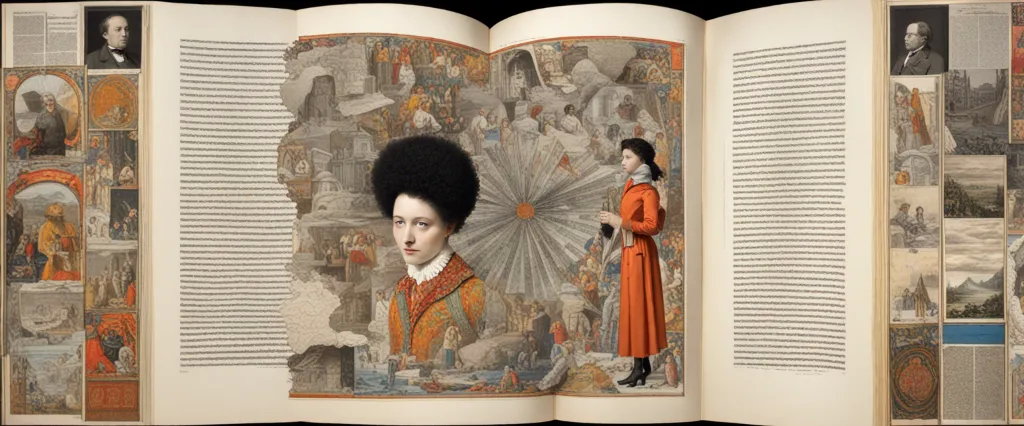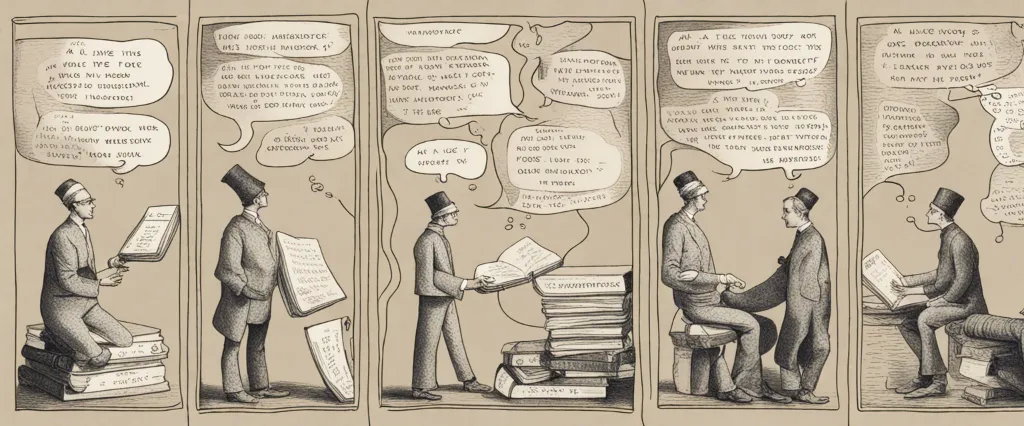
Chapter 1 What's Book A Little History of the World The book by E.H. Gombrich
A Little History of the World is a book written by Ernst Gombrich, an Austrian-born art historian and writer. The book provides a concise and accessible overview of world history, intended for younger readers but enjoyed by people of all ages. It covers the development of human civilization from the earliest known cultures to the modern-day, touching upon key events, civilizations, and individuals that shaped our world. Gombrich's writing style is engaging and engaging, making complex historical concepts easily understandable. It is praised for its ability to distill a vast amount of information into an enjoyable and educational read.
Chapter 2 Is Book A Little History of the World The book A Good Book
Yes, A Little History of the World by E.H. Gombrich is generally considered a good book. It provides a concise and engaging overview of world history, making it accessible to readers of all ages. Gombrich's writing style is clear and engaging, making complex historical events and concepts easy to understand. Many readers appreciate the book for its ability to offer a broad understanding of world history in a relatively short span, making it a great starting point for further exploration.
Chapter 3 Book A Little History of the World The book by E.H. Gombrich Summary
A Little History of the World by E.H. Gombrich is a compact but comprehensive book that takes readers on a journey through human history. Written in a conversational tone, it presents a chronological account of the major events and developments from the earliest civilizations to the modern era.
The book begins with the Big Bang and the creation of the universe, and then explores the emergence of early humans and the development of civilizations in Mesopotamia, Egypt, China, India, Greece, and Rome. Gombrich introduces readers to prominent historical figures, such as Alexander the Great, Julius Caesar, and Cleopatra, and discusses their impact on world history.
The book covers important events and periods like the fall of the Roman Empire, the rise of Islam, the Renaissance, the Enlightenment, the Industrial Revolution, World Wars I and II, and the Cold War. Gombrich also explores various aspects of human civilization, including art, religion, science, and philosophy, and how they have shaped societies throughout history.
While providing an overview of world history, A Little History of the World also emphasizes the interconnectedness of different nations and cultures. Gombrich highlights the exchange of ideas, technologies, and trade routes that have connected people across continents throughout the ages.
The book aims to make history accessible and engaging to readers of all ages and backgrounds. Gombrich's storytelling style brings the past to life, making the book an enjoyable and informative read. A blend of concise facts, anecdotes, and personal reflections, A Little History of the World provides a broad understanding of the complex tapestry of human history in a readable and entertaining manner.

Chapter 4 Book A Little History of the World The book Author
E.H. Gombrich, whose full name was Ernst Hans Josef Gombrich, was an Austrian-born art historian and writer. He is best known for his book "A Little History of the World," which provides a concise and engaging overview of human history.
Originally written in German, Gombrich completed the first edition of "A Little History of the World" in 1935. However, it was not published until 1936 due to political tensions in Europe at the time. The book was later revised and updated several times, with the final edition being published in 2005. The English translation, which is the most widely read version, was first published in 2005 as well.
Aside from "A Little History of the World," Gombrich wrote numerous other books, mostly focusing on art history. Some of his notable works include:
- "Art and Illusion: A Study in the Psychology of Pictorial Representation" (published in 1960): This influential book explores the psychological and perceptual mechanisms involved in our understanding and interpretation of visual art.
- "The Story of Art" (published in 1950): This widely acclaimed art history book provides a comprehensive overview of the development of Western art from prehistoric times to the 20th century.
- "The Sense of Order: A Study in the Psychology of Decorative Art" (published in 1979): In this book, Gombrich examines the psychological and cultural factors that influence our perception and appreciation of decorative art.
While all of Gombrich's books have their own merits, "The Story of Art" is often considered his most significant work. It has been widely praised for its accessible writing style, informative content, and comprehensive coverage of art history. Additionally, it has been continuously revised and updated to reflect new research and developments in the field, making it a valuable resource for art enthusiasts and students alike.
Chapter 5 Book A Little History of the World The book Meaning & Theme
Book A Little History of the World The book Meaning
A Little History of the World by E.H. Gombrich is a book that provides a concise and accessible overview of world history from prehistoric times to the early 20th century. The book was originally written in 1935 and later revised and updated by Gombrich himself and his granddaughter, Caroline Mustill, in 2005.
The main purpose of the book is to present a broad narrative of historical events, civilizations, and cultures in a way that is engaging and understandable for readers of all ages. It covers a wide range of topics, including the ancient civilizations of Egypt, Greece, and Rome, the Middle Ages, the Renaissance, the Age of Enlightenment, and the major events of the 20th century.
While A Little History of the World is primarily aimed at younger readers, it has also been praised by adults for its clarity, wit, and ability to distill complex historical concepts into a simplified narrative. It is often seen as a great starting point for those who are interested in history but may not have extensive background knowledge.
Overall, the book provides a broad understanding of human history, highlighting major events, ideas, and developments that have shaped our world today. It is a valuable resource for anyone seeking a concise and enjoyable introduction to world history.
Book A Little History of the World The book Theme
The book "A Little History of the World" by E.H. Gombrich explores the history of the world in a concise and accessible manner. It covers a wide range of historical events and periods, from the ancient civilizations to the modern era.
The main theme of the book is to provide an overview of the human story and to present history as a continuous narrative of human progress and development. Gombrich aims to make history interesting and relatable to readers of all ages.
Another theme present in the book is the idea that history is shaped by the actions and decisions of individuals. Gombrich highlights the achievements and contributions of key historical figures throughout different time periods, showcasing the impact they had on shaping the world we live in today.
Additionally, the book emphasizes the interconnectedness of different cultures and societies throughout history. Gombrich explores how ideas, technologies, and trade have spread across continents and influenced the development of civilizations.
Overall, "A Little History of the World" seeks to provide its readers with a broad understanding of world history and the importance of studying and appreciating the past. It encourages readers to see themselves as part of a larger historical context and to appreciate the diversity and richness of human culture and achievements.
Chapter 6 Other Accessible Resources
- Amazon: The book "A Little History of the World" by E.H. Gombrich is available for purchase in both physical and Kindle editions on Amazon.
- Goodreads: Goodreads is a popular social networking site for book lovers. You can find reviews, discussions, and ratings for "A Little History of the World" on the book's page on Goodreads.
- Barnes & Noble: The book can be bought from Barnes & Noble, either online or at one of their physical bookstores.
- Audible: Audible offers an audiobook version of "A Little History of the World," narrated by Ralph Cosham.
- Google Books: "A Little History of the World" is available for preview and purchase on Google Books.
- AbeBooks: AbeBooks is a platform that connects independent booksellers with customers. You may find new and used copies of "A Little History of the World" on AbeBooks.
- Book Depository: This online bookstore offers free worldwide shipping. "A Little History of the World" can be purchased from Book Depository.
- Librivox: Librivox provides a free audio recording of "A Little History of the World," read by various volunteers.
- YouTube: You may find video reviews or summaries of "A Little History of the World" on YouTube.
- Wikipedia: The Wikipedia page for "A Little History of the World" provides an overview of the book's content and critical reception, as well as information about the author, E.H. Gombrich.

Chapter 7 Quotes of Book A Little History of the World The book
Book A Little History of the World The book quotes as follows:
- "History is not just a collection of names and dates, it is the story of human civilization unfolding over centuries."
- "We cannot understand the present without understanding the past."
- "The great civilizations of the world have all left traces of their achievements, and it is our duty to learn from them."
- "History teaches us the importance of empathy and understanding towards others."
- "Progress is not always linear; civilizations rise and fall, and we must learn from their mistakes."
- "Learning from the past allows us to make informed decisions for the future."
- "Each civilization has its own unique contributions to human society."
- "The world is a tapestry of cultures, each with its own story to tell."
- "It is through understanding history that we can appreciate the diversity and interconnectedness of the world."
- "History belongs to all of us; it is our shared heritage and responsibility to preserve and learn from it."
Chapter 8 Similar Books Like Book A Little History of the World The book
- "Open Veins of Latin America" by Eduardo Galeano: This groundbreaking book is a must-read for anyone interested in understanding the history of Latin America. Galeano vividly describes the exploitation and extraction of resources from the region by colonial powers, providing a critical analysis of the economic and political imbalances that continue to affect Latin America today.
- "The Shock Doctrine: The Rise of Disaster Capitalism" by Naomi Klein: Building upon the themes explored in "Open Veins of Latin America," Klein's book delves into the impact of neoliberal economic policies on countries worldwide. She demonstrates how crises and disasters have been opportunistically exploited to implement market-based reforms, further exacerbating inequality and eroding social fabric.
- "Guns, Germs, and Steel: The Fates of Human Societies" by Jared Diamond: As an acclaimed work of historical analysis, Diamond explores the factors that shaped the world's social, cultural, and economic inequalities. From examining geographical factors to technological advancements, he challenges conventional explanations for why certain civilizations emerged dominant, providing thought-provoking insights into global inequalities.
- "A People's History of the United States" by Howard Zinn: Zinn's book offers a refreshing alternative perspective on American history by highlighting the experiences and struggles of marginalized groups. By focusing on the voices of workers, women, and people of color, Zinn challenges the traditional narratives of the nation's development, bringing to light the often untold stories of those on the periphery.
- "The Wretched of the Earth" by Frantz Fanon: A classic work of postcolonial theory, Fanon's book explores the psychological and sociopolitical effects of colonization on colonized populations. Through powerful prose, Fanon delves into the dehumanization and violence perpetrated by colonizers, while also outlining strategies for resistance and decolonization—a vital read for those interested in understanding power dynamics and liberation struggles.